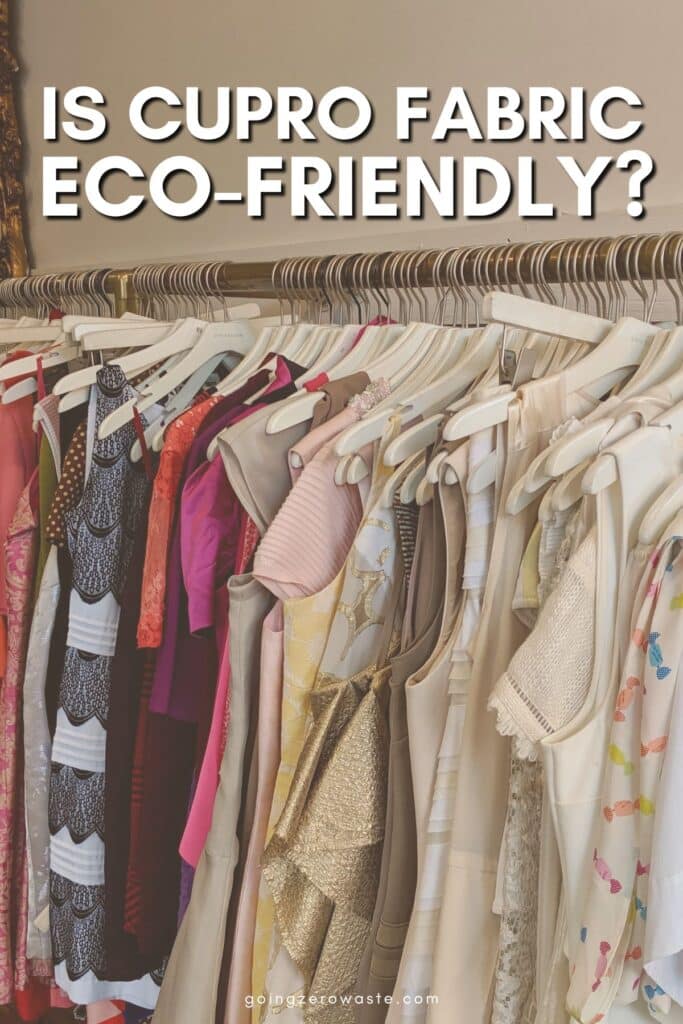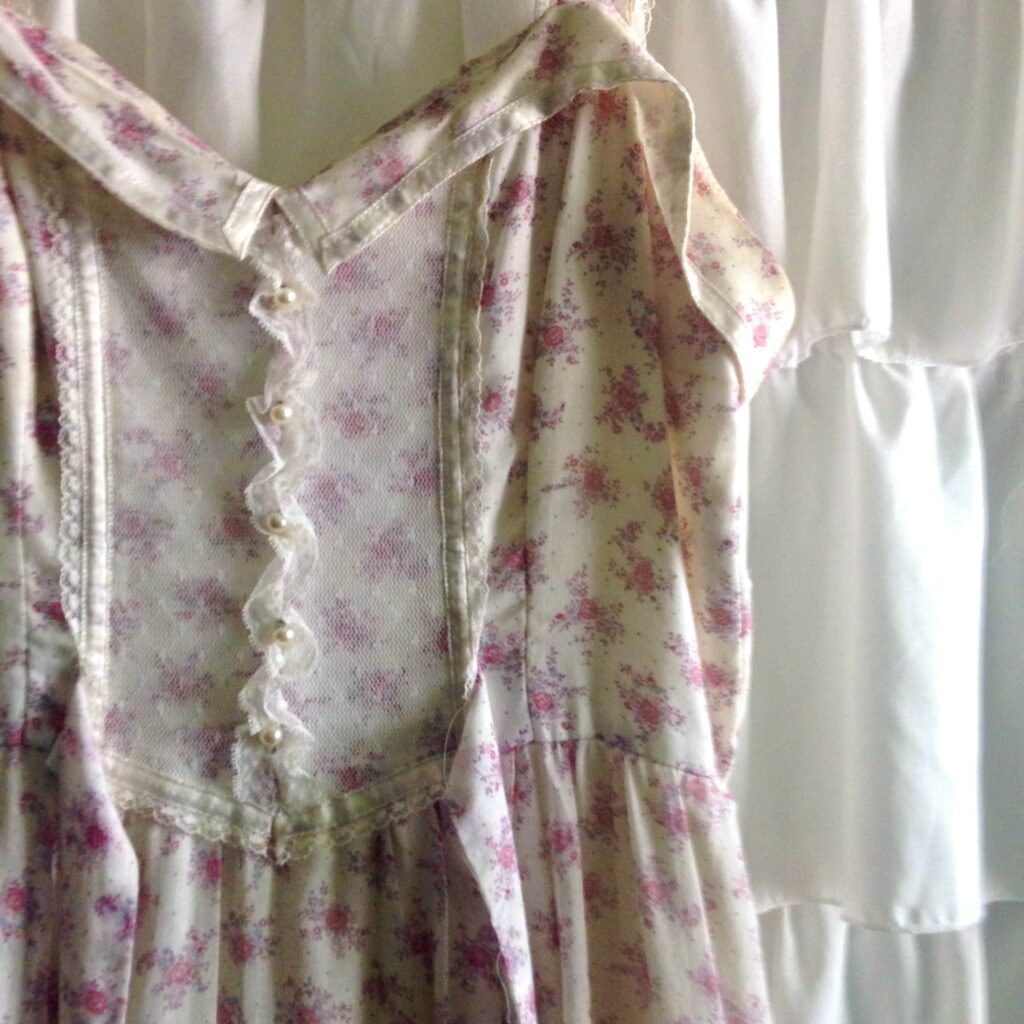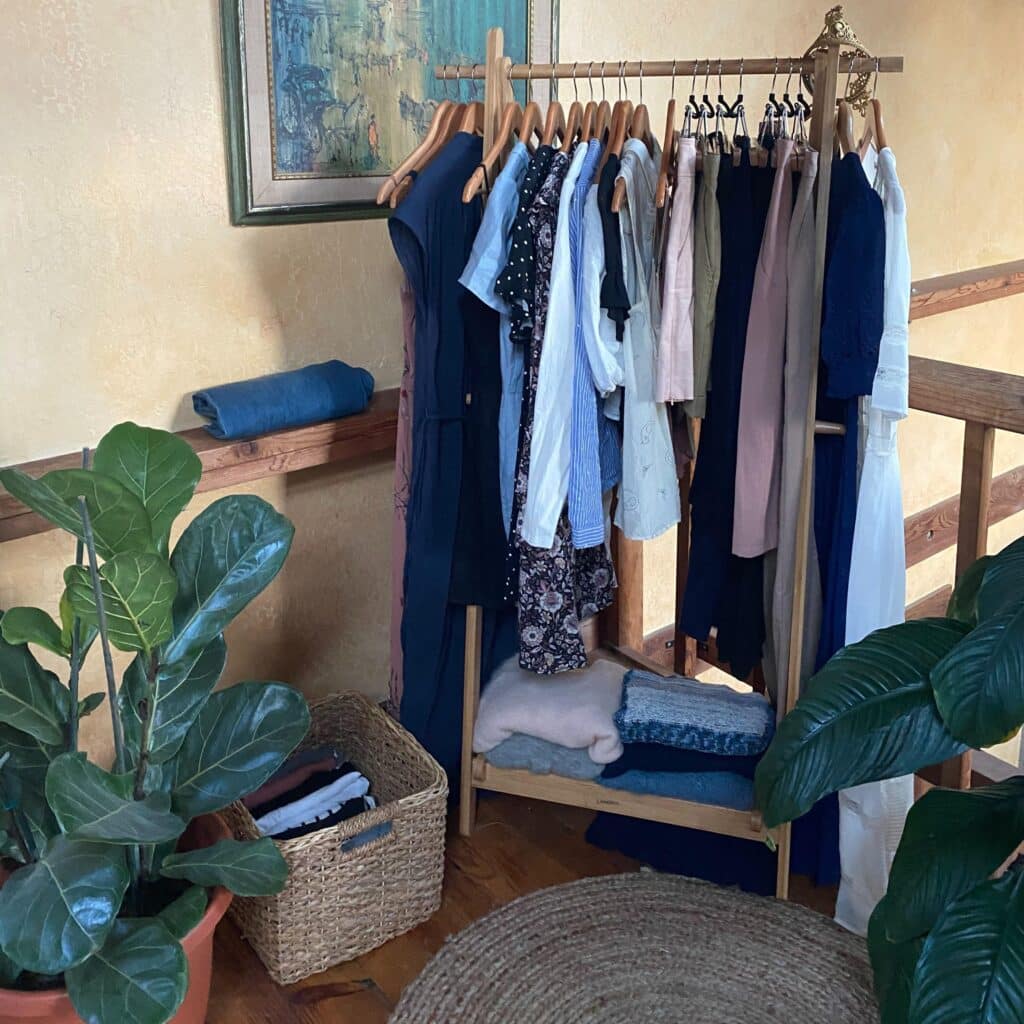Last Updated on May 10, 2024
I do my most interesting to cultivate a minimalist and sustainable wardrobe I can placed on for a really very long time. Two strategies I do that’s by making a capsule wardrobe and being conscious of the supplies I choose to placed on.
I try to go for pure fibers each time I can. Synthetic provides shed microplastics over time, aren’t as sturdy, and will’t be composted on the end of their life. Plus, I don’t truly like how synthetic provides actually really feel on my pores and pores and skin.


Synthetic and semi-synthetic provides are moreover sometimes dealt with with harsh chemical substances all through the manufacturing course of.
One such supplies is cupro materials. Have seen it sooner than in your garments tag? It’s not the most common materials, nevertheless what exactly is cupro and is it eco-friendly?
Cupro is a vegan numerous to silk. It’s a semi-synthetic materials produced from recycled cotton. Nonetheless that doesn’t routinely make it sustainable. Loads of harsh chemical substances are used inside the formation of cupro.
In actuality, cupro is prohibited to produce within the US. This suggests most of Cupro is imported from completely different worldwide areas. There are explicit causes for this we’ll dive into underneath.
For individuals who’re considering purchasing for an merchandise produced from cupro, proper right here’s all of the items it’s best to know regarding the materials, and if it’s sustainable.


is cupro man-made or pure?
Cupro is a semi-synthetic materials that is made primarily from cotton waste from the cotton rising commerce. Though cupro is derived from a pure provide, it’s mixing with different chemical substances all through the manufacturing course of make it hardly go as a pure fiber.
The raw supplies of cupro is pure though: It’s often called cotton linter which is a material obtained from the manufacturing technique of cottonseed oil. Cotton linter is the transient downy fiber enfolding cotton seeds.
Whereas cotton linter itself is biodegradable and compostable, I wouldn’t counsel composting cupro materials due to the tough chemical substances used inside the manufacturing course of. Composting it’ll launch any toxins from manufacturing, dyeing, and washing into the underside which is not actually useful.
Cupro is assessed as biodegradable (which merely means it will break up over time). Technically, so will plastic, nevertheless that doesn’t make it sustainable.
RELATED: Biodegradable vs Compostable: What’s the Distinction?
Cupro is transient for cuprammonium rayon. It acquired its title on account of the reply of copper and ammonia is used to make this particular kind of rayon. Rayon was created as an alternative to silk and rose in status because of its decrease value stage.
Rayon made using the cuprammonium course of will likely be labeled cupra, cupro, or cupra rayon under the commerce title Bemberg.
how is cupro made?
1. First, they expose the cellulose of a plant product to a mixture of ammonium and copper.
2. Then these two elements are blended with the cellulose to make a model new substance.
3. The mix is then dropped into caustic soda and extruded through a spinneret.
4. The extruded strings are immersed proper into a set of hardening baths that reconstruct the cellulose and take away the ammonia, copper, and caustic soda.


is cupro materials?
Cupro is an efficient materials by the use of working as a vegan and cruelty-free substitute for silk. It’s moreover often cheap than silk, with comparable feel and appear.
It’s simple, gentle, texture works successfully for garments that drapes all through the physique, like apparel and blouses.
Nonetheless, by the use of the ambiance, cupro isn’t most likely essentially the most sustainable supplies in the marketplace – and we’ll discuss why.
environmental impacts of cupro materials manufacturing
Cupro is taken into consideration a recycled supplies. It’s as a result of it’s produced from a byproduct of the cotton commerce, cotton linters.
Nonetheless, cotton is a crop that is recognized for using giant portions of water and pesticides which can pollute ecosystems and waterways. Typical cotton has been recognized to set off soil degradation.
Even when cupro was sourced from pure cotton, which it sometimes is not, it nonetheless makes use of loads of hazardous chemical substances all through the manufacturing course of, equal to copper sulfate, ammonia and caustic soda.
In accordance with the Council of Pattern Designers of America (CFDA), cupro is prohibited to produce inside the U.S. due to the producers incapability to regulate to water and air security legal guidelines.
Moreover, chemical substances used to make cupro can damage workers. In accordance with CFDA, work accidents can occur from explosions or leaks in chemical storage areas associated to any kind of rayon manufacturing.
Cupro can now be made in a closed-loop system, nevertheless the one producer to try this is Asahi Kasei in Japan under the trademark Bemberg. Their system ensures that the copper and ammonia utilized in manufacturing is recovered and reused.
Whereas that’s an enchancment, it’s worth noting that almost all of cupro continues to be made and exported from China, the place there could also be a lot much less transparency referring to the manufacturing course of. There, the fabric is also called ammonia silk.
Moreover, it’s worth noting that any kind of rayon manufacturing (cupro, viscose, and so forth.) entails copious portions of water waste, on prime of being an vitality intensive course of.
Most factories that manufacture rayon (and cupro) are usually powered by fossil fuels, which launch emissions that contribute to native climate change. This is not restricted to easily rayon though, as many factories that generate synthetic provides are typically powered by fossil fuels.


sustainable choices to cupro
For individuals who’re trying to find a further sustainable numerous to cupro, I prefer to suggest wanting into TENCEL Lyocell and Modal from Lenzing AG. These are every imperfect choices, moreover every sourced from rayon, nevertheless they’re further clear with their manufacturing processes.
They’re every vegan and cruelty-free and possess comparable qualities to cupro.
When choosing a rayon-based supplies, it’s essential to seek for sustainably forested, low-chemical, closed-loop producers with certifications like FSC, EU Ecolabel, and OekoTex 100.
Proper right here’s a bit further about every TENCEL Lyocell and Modal supplies from Lenzing.
tencel lyocell
- Their fibers are produced in a closed loop course of which recovers water and 99.8% of the solvent, which transforms wood pulp into cellulosic fibers with extreme helpful useful resource effectivity and low environmental affect.
- Biodegradable and compostable, if it isn’t blended with any polyester, elastane or nylon supplies/elements.
tencel modal
- A bio-based, semi-synthetic materials produced from spinning beech tree cellulose.
- Carbon-neutral, has a smaller water footprint, and requires a lot much less land per tonne than cotton fibers.
- Totally biodegradable and compostable under industrial, residence, soil and marine conditions.
Do not forget that Lyocell and Modal made exterior of Lenzing AG won’t be as eco-conscious, on account of they don’t must fulfill their rigorous necessities. Modal and lyocell you see with out the TENCEL™ certification might be going made in factories that aren’t being clear about their practices every socially and environmentally.
Try to always buy from producers which have the TENCEL™ modal and lyocell certification, in case you’ll be able to.
What do you contemplate this supplies? Will you be purchasing for it or avoiding it? Let me know inside the suggestions underneath!
